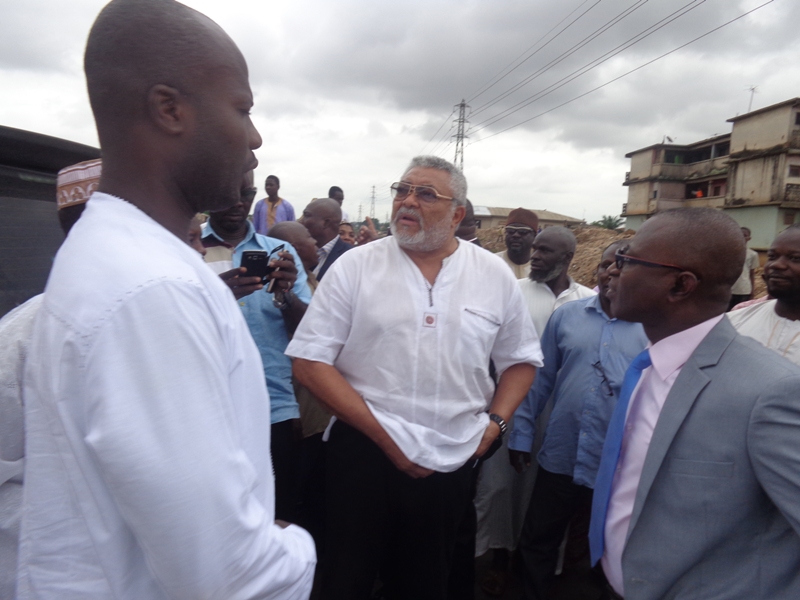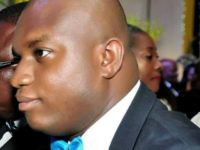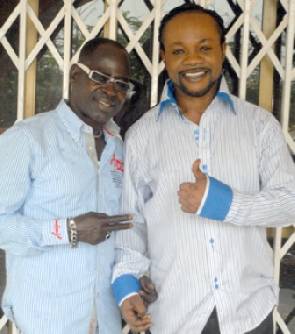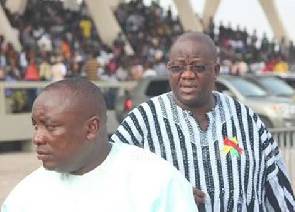THE RAWLINGS HERITAGE AND THE MIXED GHANAIAN VIEWPOINT
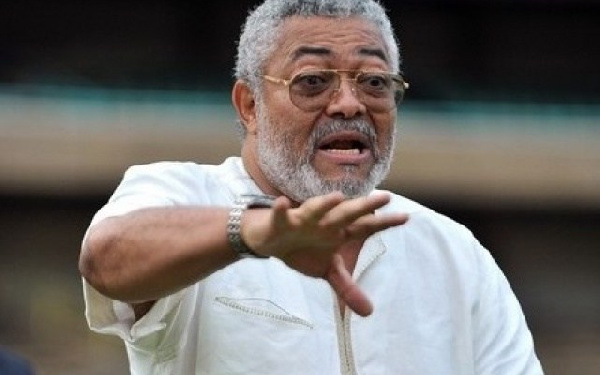
Former President Jerry John Rawlings
Rawlings is a household name that erupts mixed feelings among Ghanaians. From a hailed revolutionary leader and moral compass who sanitized the nation of corrupt leaders to a ruthless dictator under whose watch eight political figures; three high court judges were murdered, Makola was bombed, ‘dubious’ market women openly flogged, and businessmen harassed, to an astute elderly statesman whose political utterances played a role in the winning or losing of the National Democratic Congress. His death on 12th November, 2020 generated mixed reactions from Ghanaians.
Born in 1947 to a Keta and Scottish ancestry, Flight Lieutenant Jerry John Rawlings entered the canons of history when he led an unsuccessful coup on 15th May, 1979. This was an era where civil groups particularly the Trade Union Congress, Ghana Bar Association (GBA), Association of Professional Bodies, National Union of Ghana Students (NUGS) etc. vehemently opposed the Union Government Proposal of the Acheampong led Supreme Military Council I a crop of perceived corrupt upper echelons of military elite who sought to use all sought of means to maintain power. The urban elite opposed the Unigov, which was meant to be a form of government which comprised of the military-police-civilian partnership in governance, because they saw it as a desperate attempt by Acheampong and his cohorts to hold on to power. Despite opposition, the SMC I successfully ‘won’ the referendum by 55.6% ‘yes’ to the displeasure of many Ghanaians. In a subsequent turn of events on 5th July, 1978, it was announced that General Acheampong had retired as Head of State and Chairman of the SMC I and that Lt. General Akuffo had taken over as head of SMC II government. Akuffo announced a program to return the country to constitutional rule and hand over to a civilian government on 1st July, 1979 and therefore lifted the ban on political parties. This political instability, blatant abuse of power, economic mismanagement, high inflation, corruption, tarnished image of the Ghana Armed Forces, domination of the economy by foreigners particularly Syrians, Lebanese and Arabs and social injustice compelled Rawlings and a few junior officers who had become to attempt to take over the realm of affairs in a failed coup. The coup plotters: Flt. Lt. Rawlings, Aircraftman Sylvanus Tamakloe, Albert Kwesi Gbafa. Cpl. David Baba, Daniel Dzibolosu, Mr. Noi Quaynor, were subsequently arrested and put on trial. Through his public trial, Rawlings’ image in Ghana was created as a national hero whose charisma and oratory skills earned him a deep admiration from most sections of the urban population. One principal proceeding was his eagerness to claim sole responsibility for May 15. Declarations such as ‘Leave Rawlings alone’, ‘Rawlings is our man’, ‘If you kill Rawlings, you will die’, and ‘We have suffered long’ could be heard in the court room and on the streets in solidarity with Rawlings and his friends. In an interesting turn of events, on 4th June, 1979, a popular uprising erupted led by the junior officers who successfully took over the Akuffo government and broke Rawlings out of jail to lead the revolution. This coup was supported diverse sections of the population especially the youth, students, trade unions, and the professional bodies.
In the spirit of the revolution and an attempt to ‘clean up’ the nation, there was the execution of the eight military top notch including General I. K. Acheampong, Major-General Utuka, General F. W. K. Akuffo, Lt. General A. A. Afrifa, Major General R. E. A. Kotei, Air vice-Marshal G. Y. Boakye, Rear-Admiral Joy Amedume and Colonel R. J. A. Felli. This whipped up enthusiasm among the populace especially workers and youth who chanted ‘let the blood flow’ and “firing squad for nation wreckers.” They called on the AFRC to deal ruthlessly with corrupt leaders. The zeal was so much so that the youth embarked on demonstrations in support of the executions. After the second batch of executions, the GBA demanded an open trial of accused persons while the Christian Council of Ghana, National Catholic Secretariat, and the Ghana Assembly of Women appealed for justice to be tampered with mercy. After this, Rawlings announced an end to the executions, those found guilty of corruption would be sentenced to long years in prison. He also dismissed a number of top senior civil servants and police officers thereby shaking the foundations of the petty bourgeoisie power. Many businessmen went into hiding for the fear of their lives. Rawlings at this time was seen as a ‘deliverer’ for the nation.
The popularity and respect for Rawlings increased the more when he organised elections and handed power over to Dr. Hilla Limamn and the People’s National Party (PNP) in Ghana’s Third Republic in September 1979. However, after a short while, Rawlings returned the second time to usurp power on 31st December 1981, under guise of mismanagement, corruption and abuse of office. He formed the Provincial National Defence Council (PNDC) made up of both soldiers and civilians. The lawlessness that was attached to the first coup of Rawlings caused him not to attract the support of the entire populace though he still had the support of the urban working class and students but most members of Ghana’s high-ranking class were reserved about participating in Rawlings’ second round.
In an attempt to gain legitimacy and popular support, the PNDC formed the People’s Defence Committees (PDCs) in all local communities and at district and regional levels and the Workers Defence Committees (WDCs) at all places of employment. It was also meant to defend the rights of the ordinary people; expose and deal with corruption and other counter-revolutionary activities; maintain collective national discipline and supervision of national resources and give everybody the opportunity to participate in governance. Persons in positions of authority, particularly managers of businesses, heads of commercial (state and private) enterprises, and traditional chiefs, were barred from membership though some participated. Spontaneous groups consisting mainly of students, members of youth associations, unemployed elements and urban working-class groups also emerged as independent, voluntary, anti-corruption and price control squads. Unfortunately, no active policy was formulated to regulate the activities of the army, PDCs and WDCs leading to their terrorising of citizens. They initiated a ‘reign of terror’ as people with personal wealth were ridiculed as corrupt and many Ghanaians of high social or business standing were removed from their posts without providing any evidence of malpractice. The activities of these revolutionary zealots received severe backlash from chiefs, the middle and upper classes, professionals, students and other people who had initially been part of the government withdraw their support. They could no longer identify with the cause of the revolution- even university students whom Rawlings described as the backbone of the revolution – began to attack the PNDC and demanded for an end of his military rule. From 1983-1992, they constantly criticised the Rawlings government who counter attacked students anytime they went on demonstrations and some had to flee the country or go into hiding for fear of their lives.
One tragic event which led to the loss of popular support for the PNDC was the kidnapping and murder of three senior high court judges and the personnel director of the Ghana Industrial Holdings Corporation in June I982. In the midst of this political turbulence, there was a severe famine and the expulsion of about 500,000 Ghanaians from Nigeria in 1983. There was famine, scarcity of basic commodities, high inflation of more than 100%, malnutrition, shortage of drugs, low resistance to disease led to severe criticism against the government led to the disillusionment of Ghanaians about the revolution.
Another point of criticism came from the economic policy pursued. As a perceived socialist and communist, the PNDC was counting on the moral and material support of the communist countries particularly Russia and Cuba. Yet, the end of the Cold War and the democratisation of Eastern Europe led Russia into their own crisis and subsequently was unable to give more than a moral support to the PNDC, As a result, by April 1983, the PNDC was ‘forced’ to abandon its Socialism ideology as it embarked on the World Bank/IMF-inspired structural adjustment program under the Ecomic Recovery Program (ERP), a program which it criticised the Liman government for. While the ERP chalked some successes such as reducing inflation, improving food-crop production, however, the devaluation of the cedi, withdrawal subsidies on consumer items, and the introduction of fees in public schools and hospitals, and for other social services, have created additional burdens for those on fixed incomes and the poorer population at large.
In general, the revolution was mainly an urban affair as the rural populace who constitute about 70% of the population remained impervious to the revolution. They had been alienated through attempts by the PNDC to impose controls on the sale and price of food. There was also an assault on the orthodox church particularly the Catholic Church whom they saw as imperialists due to their constant criticism. There were also perceptions that the PNDC had become a reserve of Ewes and they were bent on preventing the intrusion of other ethnic groups.
After 11 years of military dictatorship, and after much persuasion from both internal civil groups such as the Ghana Bar Association, the Ghana Medical Association and the Association of Recognised Professional Bodies (ARPS), NUGS together with other sections of organised labour and the churches especially the Catholic Bishops Conference and the Christian Council of Ghana as well as external pressure especially from USA, a plan was drawn for a return to democratic rule. The PNDC formed the National Commission for Democracy (NCD), which held seminars, symposia and durbars with the public to discuss the “effective realization of a true democracy in Ghana” which led to the holding of district assembly elections in December 1988 and forming of District Assemblies in February 1989. The creation of the District Assemblies was widely supported by the populace as it brought governance to the grass root level, something which Ghanaians had not experienced in a long time. The ban on political parties was lifted in May 1992 and parties including the National Democratic Congress (NDC), New Patriotic Party (NPP), Convention People’s Party (CPP), People’s National Convention (PNC), People’s Heritage Party (PHP), National Convention Party (NCP), Every Ghanaian Living Everywhere (EGLE), and National Independence Party (NIP) were formed.
Through these concerted efforts, the Consultative Assembly (CA) was formed to draft the constitution. It was made up of 117 persons elected by the District Assemblies, 121 persons elected from 62 identifiable bodies, and not more than 22 persons appointed by the PNDC. The identifiable bodies included all sections of the public including the Armed Forces, Police Service, Committees for the Defence of the Revolution (CDR), Ghana Bar Association, the Christian Council of Ghana, the National Union of Ghana Students, University Teachers Association of Ghana, Butchers Association, Hairdressers Association, Bakers Association, Butchers Association, Chop Bar Association, Cooked Food Sellers Association, National Garage Association, Refrigerator and Air Conditioning Workshop Owners Association, Goldsmiths and Silversmith Association, Radio and T.V. Repairers Association, Video Operations Association etc. The National Council on Women’s Development was allotted 10 seats. The composition of the CA showed the willingness of Rawlings to rally support from all sections of the population including women groups. Some civil groups such as students boycotted the activities of the CA because its composition too, was packed with supporters of the regime. After a public referendum by a wide majority, approved a new constitution. Elections leading to Ghana’s Fourth Republic was held in 1992 and the handing over of power to a civilian government in 1993. (Though the dictator handed over power to himself). In this election, Rawlings was described by Gyampo as ‘the referee, footballer and linesman. Ghana returned to democracy and has since had a strong bulwark in democracy in Africa.
Politically, his most noticeable achievements include the creation of 110 district assemblies. Education wise, he transformed Winneba Advanced Teacher Training College into the University of Education, Winneba and University for Development Studies, Ghana’s first university in Northern Ghana. He also implemented the policy of one region, one Polytechnic, which today have been transformed into Technical University and accredited the establishment of private tertiary institutions. He made sure that every district had at least two senior secondary schools. He expanded the country’s infrastructure development including schools, roads, and health clinics especially at the district level. He built housing estates at Adenta Sakumono, Lashibi, and on the Spintex Road and the SSNIT Estates all over the country. He built the Kwame Nkrumah Mausoleum as the final resting place for Dr. Kwame Nkrumah, Ghana’s first president and as a result requested for Nkrumah’s remains be brought to Ghana from Guinea for burial after his death in 1972. He also built the Du Bois Center in honour of W.E.B. DuBois, a proponent of the pan-Africanism. This enhanced his image internationally and locally. Economically, he passed the value-added tax (VAT of 10%) to secure government revenue base. Under his tenure, Bill Clinton and Queen Elizabeth II visited Ghana. He is mostly hailed for the historic transfer of power from the NDC to the NPP in 2001 after which he remained at the background both supporting and rebuking the NDC governments of the late John Evans Atta Mills and H. E. John Dramani Mahama. Through the activities of the 31st December Women’s Movement, women were empowered as a result of which some stool for the District Assembly elections.
Comparatively, majority of the older generation who lived through his revolution are careful in supporting his legacy while most of the younger generation are full of love and admiration what his name represents in the canons of history. Fondly called JJ (Junior Jesus), Dr. Boom etc. the history of this nation cannot be complete without the mention of his name and legacy.
REFERENCE
Ayee, J. R. A. Ghana’s Return to Constitutional Rule under the Provisional National Defence Council (PNDC), Law and Politics in Africa, Asia and Latin America, 29(4), 1996, pp. 434-452.
Baynham, S., “Divide et Impera: Civilian Control of the Military in Ghana’s Second and Third Republics”, The Journal of Modern African Studies, 23(4), Dec., 1985, pp. 623-642.
Boafo-Arthur, K., “Ghana: Structural Adjustment, Democratization, and the Politics of Continuity”, African Studies Review, 42(2), 1999, pp. 41-72.
Boahen, A. A. Ghana: Evolution and Change in the Nineteenth and Twentieth Centuries, (London: Longman, 1975)
Gyampo, R. E V.,” Student Activism and Democratic Quality in Ghana’s Fourth Republic”, Journal of Student Affairs in Africa, 1(1&2), 2013, pp. 49-66.
Hansen, E. & Collins, P., “The Army, the State and the ‘Rawlings Revolution’ in Ghana”, African Affairs, 79(314), 1980, pp. 3-23.
Ninson K. A. & Prah, F. K., (eds.) Ghana’s Transition to Constitutional Rule, (Accra: Ghana Universities Press, 1991)
Nugent, P., Big Men, Small Boys and Politics in Ghana, Power Ideology and the Burden of History, 1982-1994, (Accra: Asempa Publishers, 1995)
https://www.ghpage.com/list-major-achievements-jj-rawlings-president-ghana/168742/
